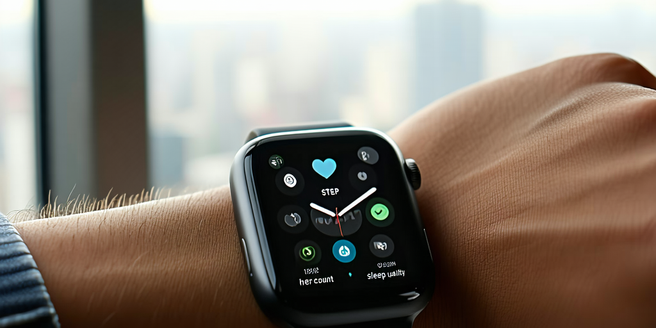Wearable Tech For Fitness

The Evolution of Wearable Fitness Technology
Wearable fitness technology has come a long way since its inception. Initially, devices like simple pedometers emerged, offering users the ability to track steps and basic movements. With the integration of digital interfaces and smart technologies, these wearables evolved into sophisticated devices capable of monitoring heart rates, sleep patterns, and even stress levels. This transformation is fueled by advances in sensor technology, data analytics, and health informatics. Companies are now incorporating AI to offer personalized fitness recommendations. As technology continues to advance, the evolution of fitness wearables is set to revolutionize personal health management, making it more accessible and tailored to individual needs.
Understanding the Benefits of Fitness Wearables
Fitness wearables offer significant benefits that go beyond step counting. They provide detailed insights into various health metrics, such as heart rate, calorie consumption, sleep quality, and more. By monitoring these metrics consistently, wearables enable individuals to make informed decisions about their health and fitness routines. The data-driven approach encourages users to set achievable goals and track their progress over time. Additionally, wearables can provide motivation through alerts and social sharing features, helping users stay engaged in their fitness journeys. Understanding these benefits is crucial for maximizing the positive impact of wearable technology on personal health.
Top Wearable Devices for Tracking Health
The market is flooded with an array of wearable devices designed to track various health metrics. Leading the pack are devices like Fitbit, Garmin, and Apple Watch, each offering unique features that cater to different fitness needs. Fitbit focuses on user-friendly interfaces and robust community support, while Garmin excels in providing detailed data for athletes. Apple Watch offers a comprehensive suite of health apps with seamless integration across other Apple devices. Other notable options include the Samsung Galaxy Watch, which offers advanced monitoring features, and Whoop, focusing on performance optimization. Selecting the right device depends on personal goals and preferences.
Integrating Wearable Tech with Personal Workouts
Integrating wearable technology with personal workouts can elevate fitness regimes from generic to bespoke. By utilizing wearables’ real-time data collection, users can tailor their workouts to align with specific goals and capabilities, whether it’s weight loss, endurance building, or strength training. These devices often come equipped with apps that offer personalized workout plans, video demonstrations, and progress tracking. Furthermore, they provide immediate feedback through notifications and stats, helping users adjust their routines on the fly. By syncing wearable data with fitness platforms, users can participate in virtual challenges and community workouts, adding a social element to their fitness journey.
Future Trends in Fitness Wearable Technology
The future of fitness wearable technology is poised to expand in several intriguing directions. One prominent trend is the integration of more advanced biometric sensors capable of detecting a wider range of vital signs and health metrics. Wearables are also likely to become more personalized, using AI to tailor recommendations and insights based on individual preferences and goals. Augmented reality (AR) could also play a role, offering interactive workout experiences. Sleeker, more discreet designs with improved battery life are anticipated, making wearables more comfortable for everyday wear. Overall, future innovations promise to make fitness wearables even more integral to daily health management.
Choosing the Right Wearable for Your Fitness Goals
Choosing the right fitness wearable depends on understanding your specific fitness goals and lifestyle. If tracking advanced metrics such as VO2 max or lactate threshold is paramount, a Garmin or Polar might be suitable. For those seeking lifestyle integration with communication and health monitoring, the Apple Watch presents a strong case. Fitbit offers simplicity and essential tracking, ideal for casual users or beginners. Consider battery life, app compatibility, and comfort to enhance daily wear. By aligning device features with personal objectives, users can ensure their wearable becomes a valuable tool in their fitness journey, helping them achieve and maintain their goals.